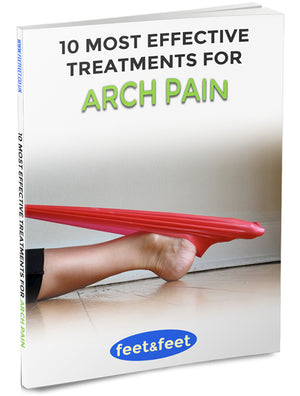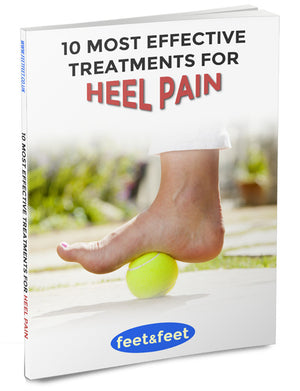What is a Bunionette?

Did you know that bunionettes are about three to ten times more common in females? A study among adults in Turkey showed that over 13.8% had bunionettes, which was more common in women.
But what is a bunionette? Why is it more common in women? Is it the same as a bunion? Let’s explore the answers to these questions.
Characteristics of a Bunionette
A bunionette, also known as the “tailor’s bunions,” is an abnormal bony protrusion or bump that develops at the base of your fifth toe (pinky toe). This implies that it develops at the junction of your pinky toe bone and the adjoining bone (fifth metatarsal) - typically at the outer or lateral part.
It is called the tailor’s bunion because several centuries ago, tailors developed this deformity due to their posture. They sat for hours daily with their legs crossed and the outer parts of their pinky toes rubbing the floor.
Bunionettes are quite similar to bunions; however, they occur at different locations and bunionettes are smaller and less common compared to bunions. Although it is usually harmless, the tailor’s bunion can become discomforting and painful if the underlying cause persists.
What Causes a Bunionette?
There are several factors that can cause a bunionette. Although these factors can be internal (intrinsic) or external (extrinsic), it often takes a combination of several factors to cause a bunionette.
Some of the common causes include:
- Genetics - Experts believe that tailor’s bunions can run in families. This is because congenital problems like loose ligaments, tightened muscles, and bowed long bones may run through families, and these can predispose you to tailor’s bunions.
- Arthritis - If you live with conditions like rheumatoid or psoriatic arthritis, you may have a higher risk of tailor’s bunions.
- Tight Footwear - Wearing shoes with narrow or pointed toes, such as high heels and undersized shoes, predisposes you to bunionettes. These shoes put pressure on the joint and increase friction between your pinky toe and the shoe’s surface. This explains why it’s more common in women.
- Poor Posture and Prolonged Standing
Bunionette Symptoms
Bunionettes are generally harmless and will not cause any pain initially. However, if the cause (such as tight-fitted shoes) remains, then you may experience symptoms such as:
- Bony bump at the base of the pinky toe
- Redness
- Pain and swelling around the bump
- Ulcers or open wounds
- Callus formation (thickened skin over your pinky toe)
- Inward displacement of the pinky toe
- The type of symptoms you experience will typically depend on the severity of the deformity.
How to Fix a Bunionette
There are several ways to fix or treat a tailor’s bunion. They can be treated with or without surgery (conservatively).
If you develop a bunionette, your doctor or podiatrist will most likely start with non-surgical bunionette treatments before considering surgical options. Generally, your treatment will depend on the severity of your symptoms.
Non-Surgical Treatments
Some non-surgical treatment options include:
- Changing Footwear - Shoe modification is often the first and most important step in treating bunionettes. Avoid wearing tight-fitted shoes, high heels, or shoes with pointed toes. Instead, wear sandals and well-fitted shoes to avoid placing pressure on the joints around the pinky toes.
- Padding - You can apply special bunionette pads over the affected pinky toe to reduce pain and swelling.
- Ice application - Applying ice packs directly on the bunions at intervals for at least 20 minutes daily can help reduce inflammation and pain. You can wrap these packs in a towel to prevent cold burns.
- Specific Exercises - Engaging in regular exercises and stretches can help take the pressure off your foot and help improve your symptoms. Swimming and calf stretches can help to reduce your symptoms.
- Pain Relief - Experts recommend taking pain medications like NSAIDs to alleviate pain and inflammation. However, if you have a previous history of ulcers, dyspepsia, or kidney problems, you should avoid NSAIDs. You should also avoid taking them on an empty stomach.
- Orthotics - Certain shoe inserts or stretchers can help to reduce and redistribute the pressure of your pinky toe.
Surgical Treatment
Surgical treatment is usually the last option on the list. Your healthcare provider will usually only suggest or recommend this when every other non-surgical option has failed. They may also suggest it when you have severe deformity or symptoms.
The type of surgery you have will depend on certain factors such as your age, the severity of your symptoms and deformities, and your activity level.
Some common surgical treatments for bunionettes include:
- Modified McBride Procedure - Usually done for mild bunions and often involves cutting part of the protruding bone. Recovery from this surgery usually takes about six weeks.
- Chevron Procedure - This procedure is often performed on people with moderate bunions and recovery typically takes 6 to 12 weeks.
- Proximal Osteotomy - This surgery is recommended for severe bunions. Usually, it involves cutting the metatarsal bone and pins or screws to keep the bones in place. You may need weeks to months to recover from this surgery.
Surgery treatment is a major decision that requires careful thought and guidance. You may be able to get treatment via the NHS depending on availability.





Leave a comment